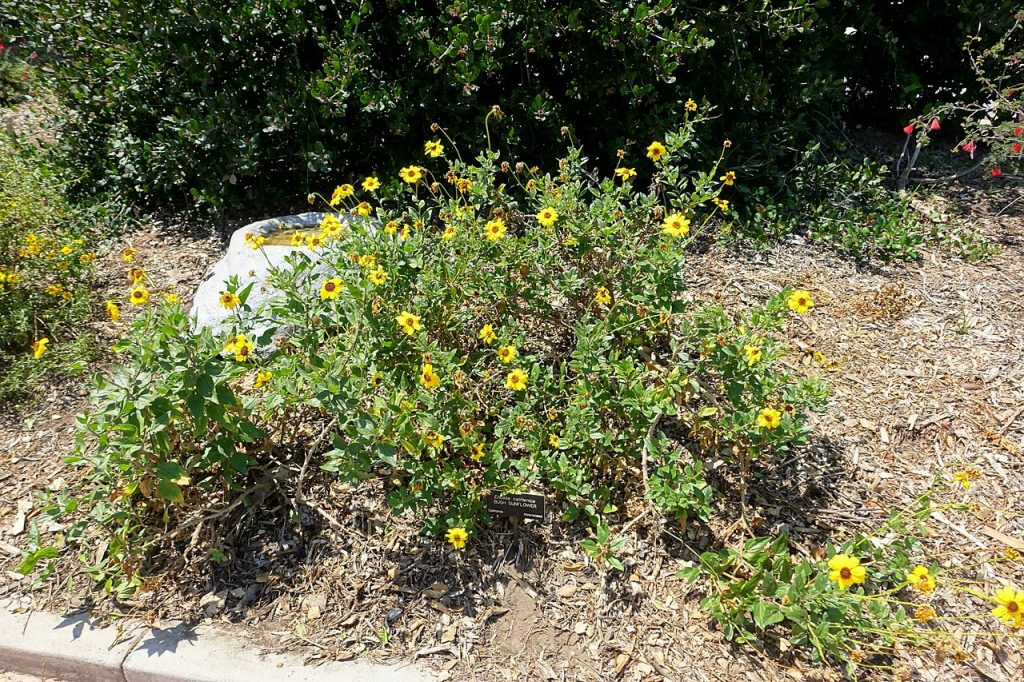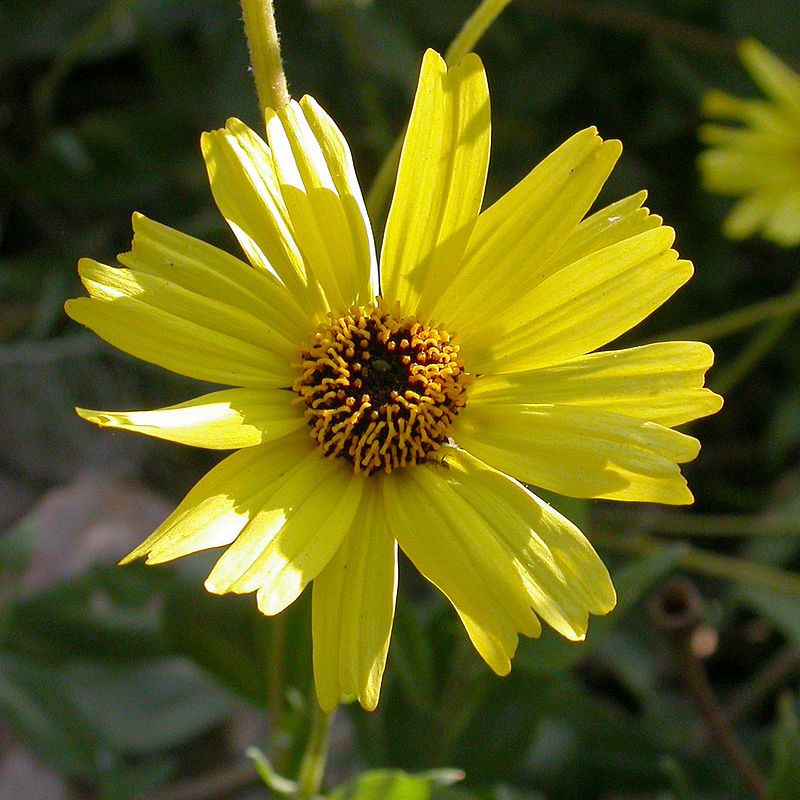
Also called California brittlebush, this shrub is native to coastal southern California and Baja California, and is a member of the aster family, Asteraceae, that also includes daisy, yarrow and lettuce. The plant usually grows 3-4′ tall and has many thin brittle branches covered with widely-spaced, ovate to lanceolate green leaves 1-2″ long. The leaves tend to drop in summer in response to drought. During the rainy season from winter to spring, solitary flower heads appear. Each head is about 3″ wide and has 15-25 bright yellow ray florets around a protruding center of yellowish to purplish brown disc florets. The florets give way to tiny dry fruits that lack a pappus. The flowers attract butterflies and other pollinators, the seeds provide food for birds, and the plant is a host for the larvae of the Bay checkerspot butterfly, an endangered species. In addition, the flowers are good in the vase. Fast growing, easy to grow, and drought tolerant, California bush sunflower is valued as a ground cover and for erosion control. Photo Credit Daderot-Wikimedia-Media

Type: Summer semi-deciduous shrub
Outstanding Feature: Flowers
Form: Mound, rounded
Growth Rate: Rapid
Bloom: Flower heads 3″ across with bright yellow ray flowers around protruding yellowish to purplish brown center, from winter to spring
Size: 1.6 – 5′ x 3-7′ W (usually about 3-4′ tall)
Light: Full sun to part shade
Soil: Sandy, dry to medium moist, well-drained
Hardiness: Zones 10-11
Care: Prune to encourage blooms and compact growth; cut back by half in the fall before new growth begins in winter; plants tend to drop their leaves in the heat of summer, are short-lived, and can become invasive
Pests and Diseases: None of significance
Propagation: Softwood cuttings, seed (reseeds)
Outstanding Selections: ‘El Dorado’
Photo Credit: Curtis Clark Wikimedia Commons